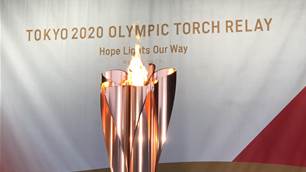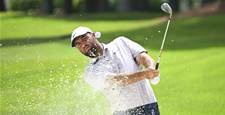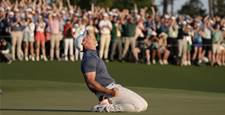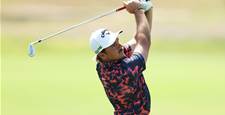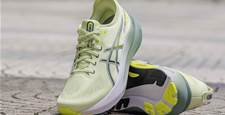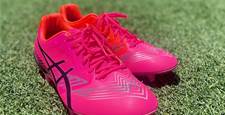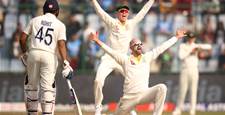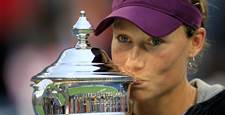Australians are gradually getting more sporty...but there's still a long way to go to beat the nation's "inactivity crisis", warns Sport Australia CEO Kate Palmer.
Page 2 of 3 | Single page
"Fitness and gym becomes a key motivation from late-teens onwards, while walking is the number one activity from 35 onwards. The message here is there’s a sport or physical activity to keep you moving throughout your entire life.
“Sport Australia launched #FindYour30 to motivate every Australian adult to find 30 minutes of physical activity a day and I encourage everyone to go to Sport Australia’s website if you’re looking for tips to get more active.”
Top 20 participation sports and physical activities
*Based on annual participation (organised out-of-school activities only for children 0-14; all activities for adults 15+)
- Walking (Recreational) 8,783,064
- Fitness/Gym 6,874,541
- Swimming 4,505,531
- Running/Athletics 3,334,693
- Cycling 2,359,660
- Football 1,767,288
- Tennis 1,202,011
- Bush walking 1,189,493
- Basketball 1,017,968
- Golf 1,015,150
- Yoga 984,362
- Australian Football 913,668
- Netball 901,903
- Cricket 798,618
- Dancing (recreational) 688,293
- Pilates 585,706
- Surfing 508,015
- Gymnastics 489,058
- Touch football 464,721
- Martial arts 316,826
FACTFILE:
- Walking has the highest participation rate, but is rarely an organised activity so Australians spend far less on walking than the other top 20 activities. Australian adults spend approximately $23 million per year on walking participation, compared to more than $3 billion Australian adults spend each year on fitness and gym activities.
- Of the top 20 activities, 10 have predominantly male participants and 10 predominantly female:
- The activities with the largest percentage of adult female participation are Pilates (90 per cent), Netball (89 per cent), Dancing (89 per cent), and Yoga (86 per cent).
- The activities with the largest percentage of adult male participation are Cricket (88 per cent), Australian Football (84 per cent) and Golf (81 per cent)
- Activities with the closest gender equity among adults include Bushwalking (51 per cent Female), Running (54 per cent Male) and Martial Arts (55 per cent Female)
- There has been a surge in women regularly participating in Australian Football since the introduction of the AFLW. The number of women (females aged 15+) participating at least once a week has risen from 31,542 in 2017 to 59,504 in 2018, while participation at least twice a week has gone from 19,005 to 48,225, a rise of 154%. But among the team sports in the top 20 activities, Netball, Football, Basketball and Touch Football still have more female participation in that order.
- Looking at participation per capita, the ACT leads adult participation in six of the 20 top activities (Gym/Fitness, Running, Cycling, Bushwalking, Football and Martial Arts). Other leading states and territories for top 20 activities include: Victoria (Golf, Basketball, Pilates); Northern Territory (Yoga, AFL, Cricket); NSW (Swimming, Tennis, Dancing, Surfing); Queensland (Touch Football); Tasmania (Walking); and South Australia (Netball).
- Football remains the largest team sport, with an estimated 1.43 million Australians playing what is considered organised football.
- Of the top 20 activities:
- Seven had a greater percentage of adult participation in remote or very remote regions compared to the overall Australian adult population. These included: Touch Football, Tennis, Australian Football, Cricket, Netball, Basketball and Walking.
- Six had a greater percentage of participation for adults of Culturally and Linguistically Diverse (CALD) backgrounds compared to the overall population. These included Football (7.8% compared to 5.4%), Fitness/Gym (36% compared to 33.8%), Running (16.5% compared to 15.3%), Cricket (3.2% compared to 2.7%), Basketball (3.9% compared to 3.5%) and Yoga (5.2% compared to 4.8%).
- Six had a greater percentage of participation for adults of Indigenous culture compared to the overall population. These included: Basketball (5.6% compared to 3.5%), Touch Football (3.8% compared to 1.8%), Netball (4.3% compared to 2.8%), Cricket (3% compared to 2.7%), Martial Arts (1.5% compared to 1.2%) and Australian Football (2.7% compared to 2.6%).
- Two had a greater percentage of participation for adults with disabilities compared to the overall population. These were Walking (49.2% compared to 43.6%) and Martial Arts (1.3% compared to 1.2%)
- Martial Arts has far different peak participation ages for males and females in organised sport. Participation for males peaks at 9-11 years of age, whereas for females it is 65+.
- Cycling has two peak age periods for organised participation: the first at ages 9-11 then again at 45-54. As they say, it’s like riding a bike!
- Golf is rare, where participation rates increase with age. More than half of all adult golfers are aged 55 and over (59%), with peak participation occurring at 65+ years of age.
- The average adult who participates in walking has a median of 156 sessions a year lasting 40 minutes.
Related Articles

So-called expert golf tips for this week

So-called expert golf tips for this week
